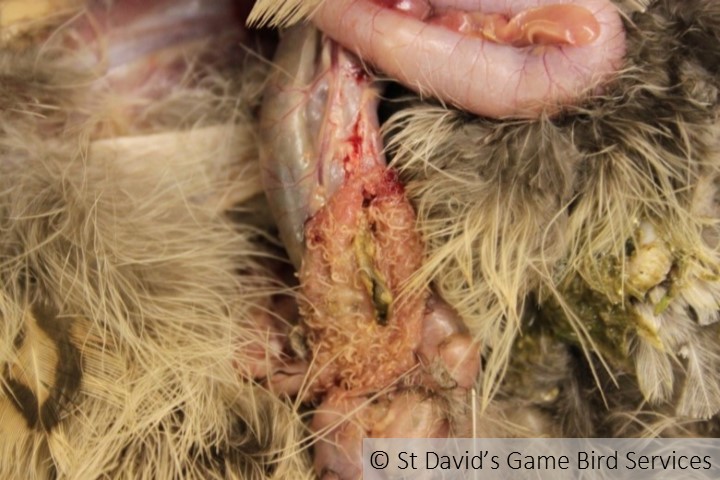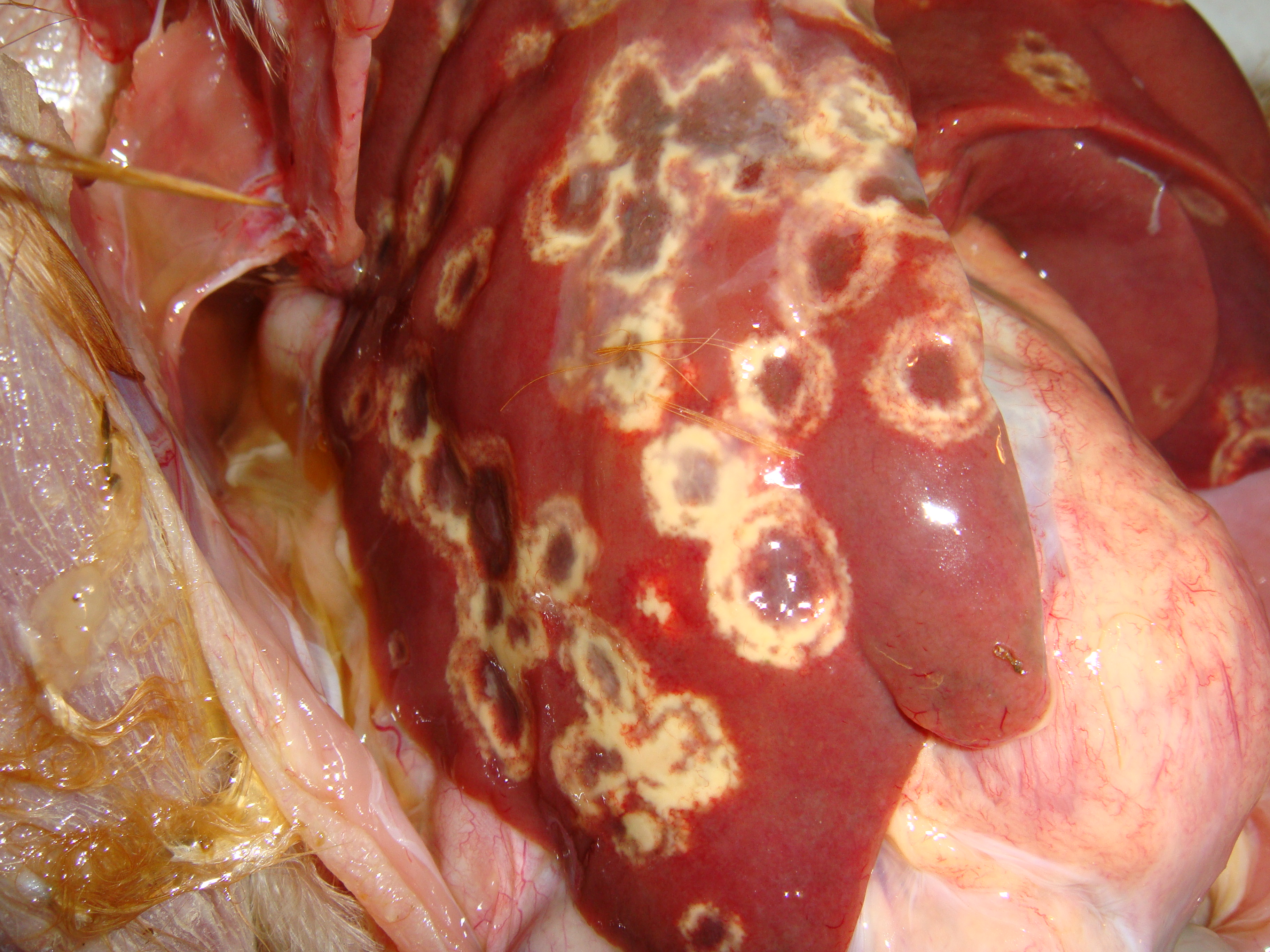Histomoniasis (Blackhead disease) is caused by the protozoan parasite Histomonas meleagridis.
This usually acts with secondary bacteria to cause lesions in the liver which can be visualised in post mortem examinations. Only in very exceptional circumstances does the disease cause a black/purple colouring of the head of the bird. This name comes from historic cases in turkeys which literally get a 'black head'. Histomoniasis affects turkeys to a greater extent than chickens or game birds. The caecal worm (Heterakis gallinarum) eggs and larvae can carry the parasite and the larvae can also themselves be carried by earthworms and both sources when eaten by the bird can cause worm infection and subsequent blackhead. Game birds can also pick up the Histomonas parasites directly from the faeces of infected birds, but in most cases it is the caecal worm that is the culprit. The Blackhead parasite can live in the caecal worms for up to four years, and the worm acts as a means of protection for the parasite from the environment. As earthworms can also be carriers of Blackhead, land can remain infected with the parasite for a considerable length of time.

Adult heterakis worms in the caecum of a pheasant
Clinical Signs
Clinical signs of Histomoniasis can include a dull and listless temperament in the bird, a frothy or bright yellow diarrhoea, weight loss and sudden death. Very rarely there is a black/purple colouring of the head.
Post Mortem Findings
Post-mortem examination shows enlarged caecae and typical lesions, usually in the so-called 'nail head' or 'horses hoof' pattern, on the liver of the bird. It is this liver damage that typically causes mortality. Often ulcers can be seen in the caecum wall - where the parasite lives before it burrows into the liver.

Typical blackhead lesions in the liver
Diagnosis
Blackhead disease is diagnosed via a post mortem examination and the finding of the typical lesions in the liver and caecae. Definitive diagnosis can also be achieved by histopathology where portions of the affected blind gut or liver are examined under the microscope to look for the parasites.
Treatment and Control
Emtryl was an effective treatment of Blackhead, but has now been banned. Since then, all treatments are aimed at preventing secondary bacterial infections. It is essential that birds infected with Blackhead are wormed to kill the Heterakis worms that may be carrying the parasite, and this should be repeated again after 14 days. Oregano essential oil containing compounds may have some effect against the parasite and help to reduce the chances of blackhead infection.
Some of the best Blackhead disease prevention methods are good management practices. Good control of worms through regular worming, keeping away wild birds and having good biosecurity can all be effective control methods - as is a fresh foot dip and clean wellies!! Although the oral route of infection is considered the most likely, it has been shown in turkeys and chickens that the parasite can enter via the vent when the birds are kept on dirty litter. There is no reason to suggest this cannot also occur in other species, so good hygiene plays its part in controlling the disease. Preventing the birds having access to feed spilled on the ground together with giving the birds access to clean, dry areas is also important.





